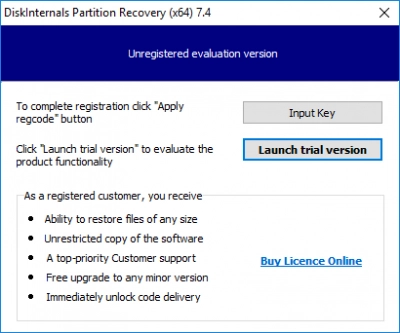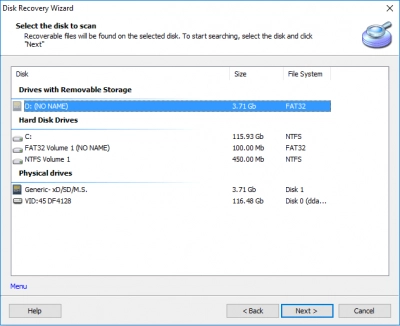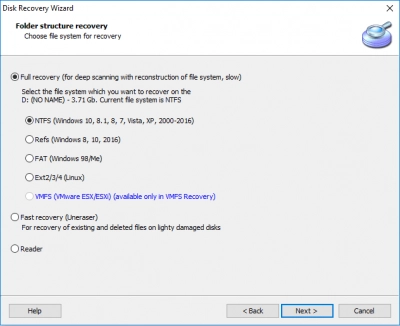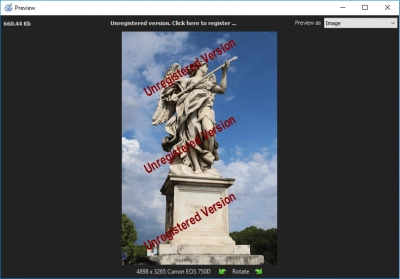How to Recover Deleted Files after Windows 10 Update
Windows update is quite important; it adds new features to your Windows PC and fixes bugs found on the previous version of your Windows OS. However, Windows OS updates can cause a lot of issues, including loss of files and important data. If you notice that your files are missing after installing Windows updates, here are tips to get back the files.
How to Recover Deleted Files after Windows 10 Update
The download and installation of the Windows 10 update can take longer. When a windows update installation is interrupted, it may result in file loss or serious logical harm to the hard drive because some people find it impossible to wait for that many hours. But as was already indicated, you can always recover files that Windows update problems caused you to lose.
Reasons Why Windows 10 Updates Delete Files
1. Bug in the Update
While Windows updates are designed to correct issues and enhance performance, they aren't always flawless. There have been instances where Microsoft rolls out an update, only to quickly follow it with another update aimed at fixing bugs introduced by the first one. This indicates that not every Windows update is "perfect." Therefore, it's advisable to exercise caution and wait for user reviews before installing a newly-released version of the operating system. Rushing to update could result in lost files due to software glitches.
2. Unexpected Scenarios
Unless manually deactivated, Windows 10 updates run in the backup; the updates download and install without your approval. In such scenarios, a buggy update file may automatically install, thus, causing file integrity issues, which could subsequently lead to loss of files. To prevent this, you need to stop Windows updates from running automatically, and here’s one of the ways to get it done.
From Group Policy Settings: Click on the search icon/bar and type “Group Policy.” Open the corresponding Settings result and go to Computer Configuration 🡺 Administrative Templates 🡺 Windows Components 🡺 Windows Update. Open the Windows Update settings and disable automatic updates. You can also choose to tell Windows to notify you before downloading/installing update files.
Ways to Recover Your Lost Data after Windows 10 Update
It’s sad to hear that your files went missing after windows updates. But not to worry, here are some tips on how to recover them.
1: Backup and Restore Feature on Windows 10
Windows comes with a built-in feature that lets you backup and restore files – just as a data backup software program allows you to do. However, before this option will work for you, you must have set up a backup drive prior to the loss of file. So, to facilitate this process, the backup drive should be connected to the computer and then you can restore the lost files. Hereunder is the practical aspect.
- Press Windows Key + R and type “Control” into the Run Box to launch Windows Control Panel.
- Look out for Backup and Restore (Windows 7) and open the option
- Select your backup location and follow the prompts to restore your lost files.
2: Sign Out from the Temporary Windows Profile
Sometimes, this common practice can fix things up. This means signing out of your account – whether you’re on an admin account or guest account – and waiting for some minutes or hours before signing back in. This is pretty a simple process: press the Windows key together with the L key on your keyboard (Windows Key + L) and select “Sign Out.” Once you sign out, you may also shut down the system while you wait.
3: Recover Files Using Data Recovery Software
This is practically the most reliable and straightforward procedure to get back your files lost due to a Windows OS update. Actually, there are many data recovery programs out there, that you can use, but not all of them are recommendable. Using a professional data recovery software like DiskInternals Partition Recovery, you can recover all file types, and it can read all file systems.
DiskInternals Partition Recovery tool runs on all Windows OS versions with an intuitive interface that anyone can easily understand. Impressively, this data recovery program also lets you preview the recovered files to confirm they are the actual ones you needed to recover. This makes everything much friendlier and more exciting.
Using DiskInternals Partition Recovery to Recover the Lost Files on Windows 10
- Download and Install Partition Recovery: Download DiskInternals Partition Recovery from the official website and install it on your Windows OS computer. Ensure that the drive from which the files got lost is active on the computer.
- Scan the Drive: Launch DiskInternals Partition Recovery, select the drive, and choose a scan mode. The two modes to choose from include Fast Recovery and Full Recovery. As the name connotes, Full Recovery may take hours to complete if the files on the drive are too many, but Fast Recovery, as the name implies, scans faster.
- Select Files for Recovery: After the scanning is complete, the recovered files will appear with a red asterisk to differentiate them from the ones that are still saved on your drive. So, you can double-click on the recovered files to preview them and ensure they are the ones you need to recover. After that, select the files and recover them back to another storage.
- Recover Files: To save the recovered files, you must upgrade your DiskInternals Partition Recovery software to the PRO version. Also, you cannot save the recovered files on the same drive where they got deleted from; instead, you will have to save them to another drive, and then re-copy them to the primary drive if you still need the files to be stored there.




4: Recover the Administrator Account
In some cases, recovering the admin account can fix up the situation. This is usually the case if you were prompted to create a Microsoft account during the update process. The new Microsoft account may not contain your files, so you have to recover the old admin account to still have access to your files. Here’s how to restore the main admin account on your PC.
- After you have logged in using the newly created MS account, right-click on Start and select Computer Management.
- Under the Computer Management page, open the Local Users and Groups tab and select “Users.”
- Double-click on “Administrator” on the left pane and uncheck the “Account is Disabled” option.
- Click on Ok.
5: Recover from a Previous System Restore Point
Windows OS, somehow, automatically creates restore points for you. These restore points are usually created before Windows OS updates are installed, so that, if the update breaks your PC or leads to loss of files, you can roll back to the previous restore point. To find these restore points, follow the procedure below:
- Press Windows Key + R and type “Control” into the Run Box to launch Windows Control Panel.
- Look out for the Recovery option and open it
- Click on Open System Restore
- Select the Restore Point of your choice and restore your PC to that point.
6: Using File History to Restore Files
Similar to the Back and Restore feature, Windows OS has another built-in utility for file recovery. The File History utility is pretty effective in getting back your lost files, but it needs to be configured prior. This means to say that if you didn’t enable file history earlier on the PC, you cannot use it to recover your files. Notwithstanding, here’s how to use file history for recovery on Windows OS.
- Press Windows Key + I to launch Windows Settings
- Open the Backup options
- Click on “More Options” under File History and follow the instructions to recover previous versions of your files.
7: Check Windows.old Folder
If you install a new Windows OS on your computer, depending on how you formatted the system before loading the new OS, your previous files will be saved in a custom folder called “Windows.old” – found in the USER directory.
This folder will contain everything from your old Windows OS, including your document and media files. So, if you can access this folder after installing a new Windows OS version, you can have access to the files and documents you thought were missing.
- Open File Explorer and click on This PC
- Double-click on your local drive and find the “Windows.Old” folder
- Open this folder and look for your files in their respective folders.
Conclusion
Explained in this article are the different ways you can get back your files that got missing after a Windows update. The best resort would be the DiskInternals Partition Recovery, which runs on all Windows OS versions and integrates many handy features.
FAQ
Do file recovery tools help to recover data after Windows update?
File recovery tools can help recover data after a Windows update if the update process has resulted in data loss or corruption. Windows updates can sometimes cause issues that result in the loss of important files or damage to the file system. In such cases, file recovery tools can scan the affected storage device and attempt to recover lost or damaged files.
Will upgrading my version of Windows delete files?
Upgrading your version of Windows should not delete your files. In most cases, the upgrade process will preserve your personal files, programs, and settings. However, it is always recommended to take a backup of your important files before performing any major system updates or changes.
Which Windows 10 update is deleting files?
It's important to note that data loss or file deletion during Windows 10 updates is relatively rare, and most users do not experience any issues during the update process. However, it is always recommended to back up your important files before performing any major system updates or changes to prevent potential data loss.
